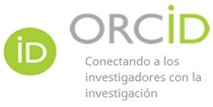Analysis of dental retreatments in UNIANDES students, Ibarra: clinical and psychological effects
DOI:
https://doi.org/10.62697/rmiie.v4iS1.151Keywords:
Orthodontic retreatment, orthodontic relapse, functional factors, aesthetic factors, descriptive methodology, patient perceptionAbstract
Orthodontic retreatment was a significant option to maintain a healthy and aligned smile in adulthood. Various reasons led to the need for retreatment in individuals who had previously undergone orthodontic treatment, with functional and aesthetic factors being the most prominent. The theoretical framework indicated that the growing popularity of orthodontic treatments extended across different age groups, from childhood to adulthood, with a particular focus on adolescents. However, Ecuador’s socioeconomic development showed rapid but uneven growth, which affected the distribution of orthodontic resources across different regions. The research adopted a descriptive, cross-sectional, and non-experimental methodology, using structured surveys applied to students from the Faculty of Dentistry at the Regional Autonomous University of the Andes. The results indicated that relapse rates and the need for retreatments continued to represent a significant challenge in the field of orthodontics. Nevertheless, a positive perception toward retreatments was observed among the students. In conclusion, a high incidence of retreatments was identified, as approximately 40.6% of the students required a new orthodontic treatment, highlighting the need to address post-treatment issues more thoroughly.
Downloads
References
Bardales-Alcocer, J., Ramírez-Salomón, M., Vega-Lizama, E., López-Villanueva, M., Alvarado-Cárdenas, G., Serota, K. S., & Ramírez-Wong, J. (2021). Endodontic Retreatment Using Dynamic Navigation: A Case Report. Journal of endodontics, 47(6), 1007–1013. https://doi.org/10.1016/j.joen.2021.03.005
Barreto Ascona, J. I., & Lezcano Mencia, A. (2023). Análisis y fundamentación de los diseños de investigación: explorando los enfoques cuantitativos, cualitativos y mixtos basados en Creswell & Creswell (2018). Revista UNIDA Científica, 7(2), 110–117. https://revistacientifica.unida.edu.py/publicaciones/index.php/cientifica/article/view/179
Gulabivala, K., & Ng, Y. L. (2023). Factors that affect the outcomes of root canal treatment and retreatment-A reframing of the principles. International endodontic journal, 56 Suppl 2, 82–115. https://doi.org/10.1111/iej.13897
Li, J. Y., He, S. Y., Wang, P. X., Dai, S. S., Zhang, S. Q., Li, Z. Y., Guo, Q. Y., & Liu, F. (2023). Incidence and risk factors of unplanned retreatment following dental general anesthesia in children with severe early childhood caries. Frontiers in pediatrics, 11. https://doi.org/10.3389/fped.2023.1163368
Mantilla Naranjo, S. D., Gavilanes Villamarín, S. M., Armijos Moreta, J. F., & Cleonares Borbor, A. M. (2023). Efectividad de tratamientos ortodónticos en pacientes de 17 a 27 años. Gaceta Médica Estudiantil, 4(2S). https://revgacetaestudiantil.sld.cu/index.php/gme/article/view/172
Moreira Campuzano, T., Mazzini Torres, F. M., & Melgar Rosales, A. (2020). Revisión sistemática sobre los tipos de tratamientos relacionados con la Ortodoncia Interceptiva en jóvenes y niños. Revista Científica Especialidades Odontológicas UG, 3(1), 127–131. https://revistas.ug.edu.ec/index.php/eoug/article/view/310
Proffit, W. R., Fields, H., Larson, B., & Sarver, D. M. (2019). Ortodoncia contemporánea. Elsevier Health Sciences.
Rodríguez Lara, A., & Pérez Hernández, L. J.. (2025). Comunicación de malas noticias en odontología: Un enfoque profesional y empático. Revista ADM Órgano Oficial de La Asociación Dental Mexicana, 82(1), 22–26. https://www.medigraphic.com/cgi-bin/new/resumen.cgi?IDARTICULO=119365
Sandoval-Vidal, H. P., & Rivera-Molina, L. E. (2018). Variaciones genéticas, polimorfismos y reabsorción radicular externa asociada a tratamientos ortodóncicos. Revisión de literatura. CES Odontología, 31(1), 47–56. https://doi.org/10.21615/cesodon.31.1.5
Zmener, O., & Della Porta, R. (2021). Endodoncia y ortodoncia. Parte 2. Casos clínicos. Revista de La Asociación Odontológica Argentina, 109(2), 91–99. https://raoa.aoa.org.ar/revistas/revista_fulltext?t=325&d=endodoncia_y_ortodoncia._parte_2._casos_cl%C3%ADnicos&volumen=109&numero=2/
Downloads
Published
How to Cite
Issue
Section
License
Copyright (c) 2025 Christian David Zapata-Hidalgo, Karen Estefanía Chicaiza-Bonilla, Luigi Paul Corrales-Valles, Steven Marcelo Velastegui-Valenzuela

This work is licensed under a Creative Commons Attribution-NonCommercial-ShareAlike 4.0 International License.
Authors who publish in Revista Mexicana de Investigación e Intervención Educativa (RMIIE), of Universidad Pablo Latapí Sarre agree to the following terms:
1. Copyright
Authors retain unrestricted copyright to their work. Authors grant the journal the right of first publication. To this end, they assign the journal non-exclusive exploitation rights (reproduction, distribution, public communication, and transformation). Authors may enter into additional agreements for the non-exclusive distribution of the version of the work published in the journal, provided that acknowledgment of its initial publication in this journal is given.
© The authors.
2. License
The articles are published in the journal under the Creative Commons Attribution-NonCommercial-ShareAlike 4.0 International License (CC BY-NC-SA 4.0). The terms can be found at: https://creativecommons.org/licenses/by-nc-sa/4.0/deed.en
This license allows:
- Sharing: Copying and redistributing the material in any medium or format.
- Adapting: Remixing, transforming, and building upon the material.
Under the following terms:
- Attribution: You must give appropriate credit, provide a link to the license, and indicate if any changes were made. You may do this in any reasonable manner, but not in any way that suggests the licensor endorses or sponsors your use.
- NonCommercial: You may not use the material for commercial purposes.
- ShareAlike: If you remix, transform, or build upon the material, you must distribute your creation under the same license as the original work.
There are no additional restrictions. You may not apply legal terms or technological measures that legally restrict others from doing anything the license permits.












